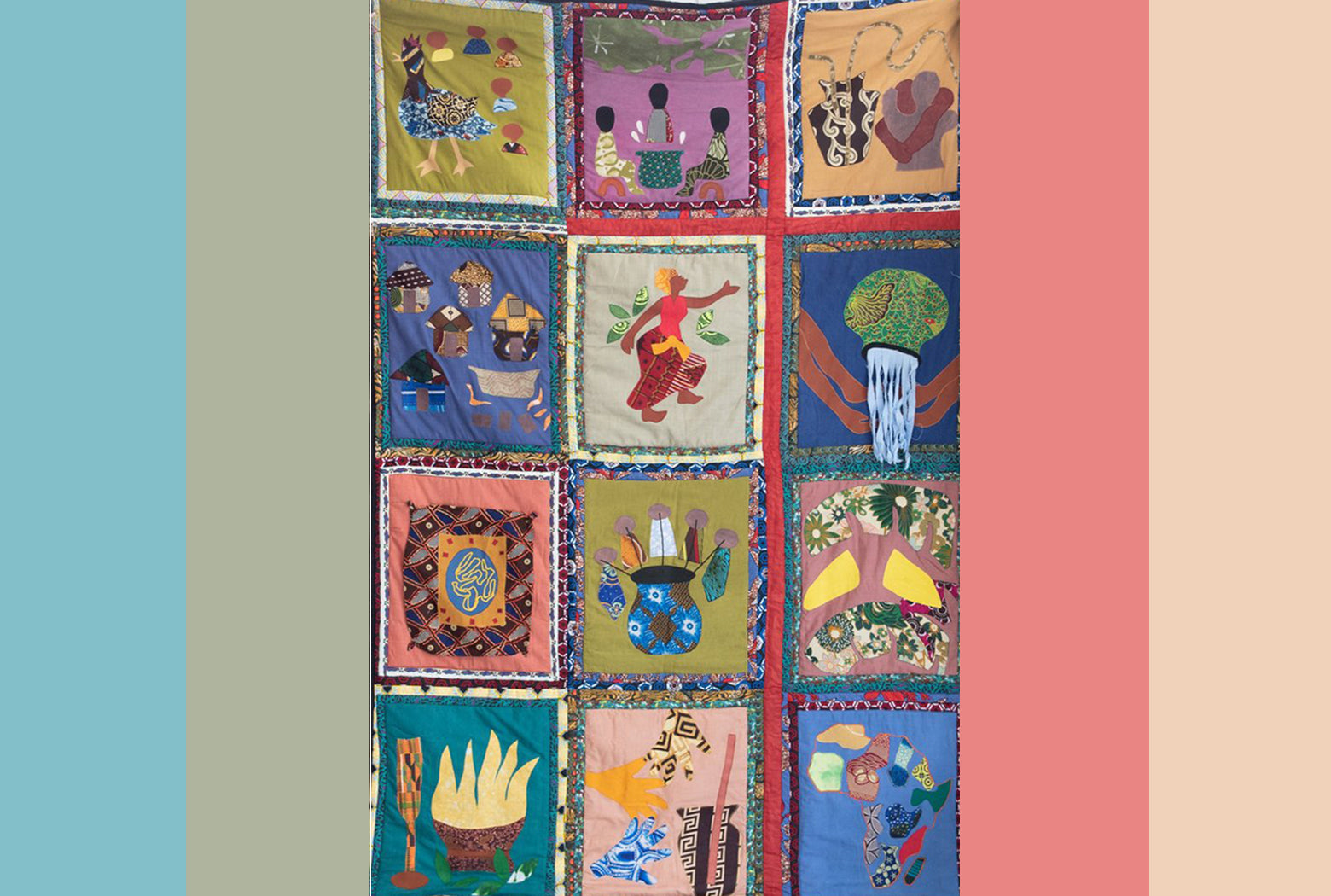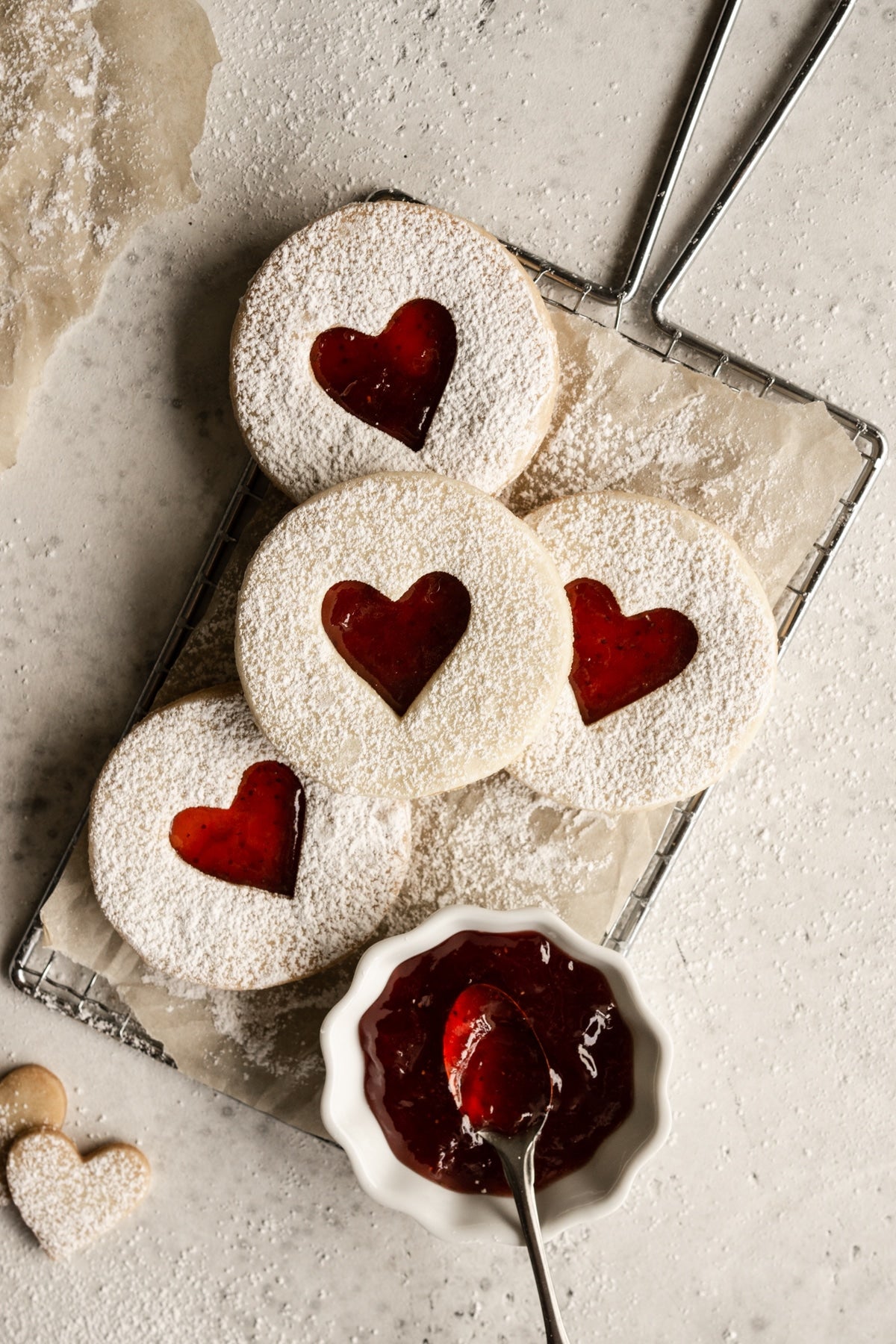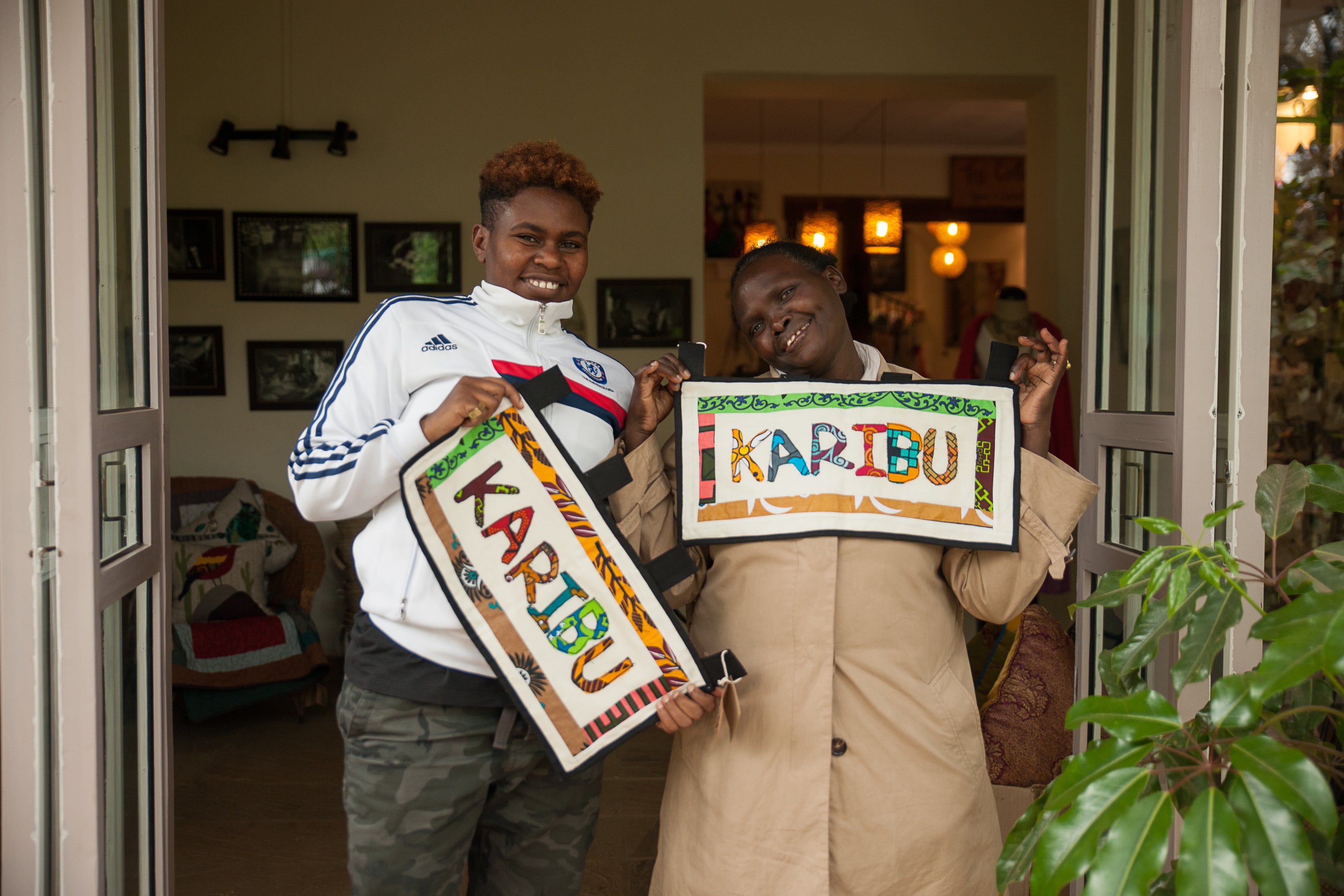
The Amani ya Juu Unity Quilt

MAKING OF THE UNITY QUILT
The original Amani unity quilt was designed in 1999, it was a collective effort by artists and designers working together at Amani ya Juu at the time. All the materials used are from local African prints. They are then hand-crafted using techniques of batik, tie-dye and ink-stamped using African motifs. Several African women were involved in stitching the different panels of the quilt. The embroidery work is done on a quilting machine.
Each quilt is unique because the fabrics are hand-selected in the local market before they are hand-crafted and designed at the Amani workshop. Some of the women involved in the construction of the original unity quilt were refugees from other countries of Africa and others were Kenyans. Each panel of the quilt represents an Amani woman who was interviewed about traditions of peace and reconciliation in her home country.
The traditions represented in each panel are fascinating!:

Kenya ~ Kamba, as described by Magdalene
Muny'woki
When a rift occurs between two families and they are unable to resolve it themselves, the elders are called to act as mediators. The one who is found to be in the wrong is required to give out a young goat and a rooster to be slaughtered. The elders collect special leaves which are dipped in water. The elders sprinkle each family member with this water to cleanse and purify them. The chicken is shared between the two families and then a large meal is prepared for the families and community.

Sudan ~ Madi, as described by Veronica
After it has been decided that a dispute between two familes needs to be settled, the familiies sit together with the elders and talk about the problem. After the problem has been sorted out, each member of all those invovled spit into a pot, beginning from the youngest to the oldest. To spit in the same pot is a sign that there is nothing between them. Some of this spit is poured on the doors of both houses. The remaining spit is thrown in the direction of the sun as it is setting, representing that the problem is now disappearing and is behind them.
 .Burundi~Hutu, as described by Jeanne
.Burundi~Hutu, as described by Jeanne
The elders are called to talk with those who are having the dispute. When it is decided who is at fault, the offender pays something to make amends. The one who has offended is first encouraged to say he is sorry for his wrong and then the one who has been offended is encouraged to forgive him. The two who were in discord, as a sign of forgiveness, drink banana juice from one pot which has two straws. The two hug afterwards.

Liberia ~ Bassa, as described by Mama Nyahn
The chief and elders meet with the two families in conflict in the center of the village and, after listening to both sides, the chief suggests a resolution. After the two sides agree, a sheep is cooked and everyone in the community then celebrates by eating from the same bowl in the center of the village. This sharing of the meal means that everything is over.

Democratic Republic of Congo ~ Luba, as described by Josephine
After everything is resolved between the two families, a hole is dug, a chicken is slaughtered, and the blood of the chicken is put in the hole. The knife that was used to slaughter the chicken is also put in the hole. After that, the hands are washed with water over the hole and then the hole is covered symbolizing that the two families will no longer remember this problem between them. The chicken is then cooked and eaten by the two families and the neighbors.

Somali/Kenya ~ Dagodia, as described by Maimuna
When there is a problem, the elders are called. The elders solve the problem by discussing it with the representatives of each family. After they promise to no longer create a problem, reconciliation between the two families is celebrated by eating pasta together. This is done while sitting on a mat. Camel meat is also eaten. Everyone agrees to live in peace by shaking hands and kissing each other on the cheek.

Rwanda ~ Tutsi/Hutu, as described by Mathilda
When there is a dispute, the elders talk first with representatives from each group. Here the problem is exposed. When the dispute is settled, everyone drinks banana juice or sorghum from one pot on the ground which has many straws in it. The drink is provided by the one who is found guilty. Everyone drinks at the same time from the long reeds in the pot. Afterwards everyone hugs each other to show that the problem is finished.

Uganda ~ Bagisu, as described by Sarah
The elders first discuss the problem with the two disputing families and come to one agreement. Then, on behalf of the two reconciling families, the elders peel a banana, break it in two pieces and each representative of the two families is given a half of the banana to eat. A goat is killed and cooked and the families eat it together. Because of the love they now have for each other, no other problems can divide them.

Ethiopia ~ Tigre, as described by Kelemework
The elders mediate for the families in dispute. When peace is made, the two families drink water or milk from one cup. After this they are like borthers and sisters. The elders warn those who were involved in the dispute not to quarrel again and then pray for them. The sheep is slaughtered and a meal is shared together, followed by the coffee ceremony. While the coffee ceremony is conducted, olive leaves burn on the fire, sending up an aroma of peace. There is singing and dancing together by the two families as they celebrate the peace they now enjoy.

Mozambique ~ Ndau, as described by Magdaline
The elders, with the two families, sit down together and discuss the problem. Once a resolution is achieved, a coconut juice is drunk by the older people in the families from one cup with one long straw made from a reed. All those involved lay their hands on top of each other, illustrating their oneness in the agreement. To celebrate a meal is shared.

Broken Africa
Though these traditional customs hav ebeen practiced for as long as anyone remembers, Africa is still a borken continent of wars and tribal clashes. Is there a lasting solution to these problems?

Dancing African Women
The dancing African woman who is point to the cross is celebrating the work of Christ on the cross, which has reconciled us to God and given us a higher, more lasting peace (Amani ya Juu) that transcends all tribal and cultural differences. Once we are reconciled to God, each of us are able to experience genuine forgiveness and reconciliation with one another. The love of Christ, as displayed through His sacrifice on the cross and experienced in our hearts, is able to bring permanent peace in our hearts and as we relate to others.
___________________________________________________________
Several influential friends took peace home with them after visiting the Amani Nairobi center and seeing the unity story in living color:
-
The unity quilt was on display at the Jimmy Carter Peace Center in Atlanta, Georgia for many years
-
Samaritan’s Purse hung the Amani Unity Quilt in the entrance of their headquarters in Boone, NC.
-
Maya Angelou showcased an Amani Unity Quilt (signed by all the Amani women) at her Amani Children’s Foundation Store in Winston Salem, Oregon.
-
The Amani Unity Quilt was entered in a Canadian Quilter Guild competition -- and won!
A Final Word
(Eph 2:14)






Leave a comment
This site is protected by reCAPTCHA and the Google Privacy Policy and Terms of Service apply.